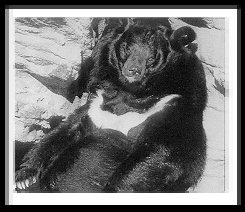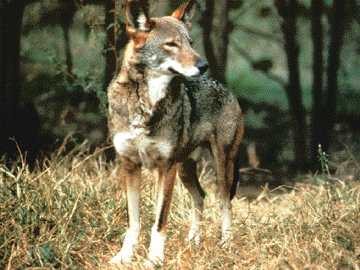|


Here are some great pictures of some of the endangered species. You will also find links within the explanations so that you can learn more about each one. Keep checking back, because I am going to be adding more pictures of endangered species. I am sure you will find this information very interesting. Remember, endangered means it can be changed; extinction means forever.

Tiger (Panthera Tigris): Fewer than 6,000 of these magnificent cats are likely to remain in the wild. All tigers are native to Asia and live in temperate regions, such as Siberia, and tropical regions, such as Southeast Asia. Tigers face a variety of threats--from habitat loss to poaching. Recently, poaching for their bones and other body parts for use in Oriental medicines has accelerated and has become the most urgent threat to the species survival. An estimated two-thirds of the world's remaining wild tigers live in India. To read some more interesting facts about tigers, click here.

Black Rhino (Diceros bicornis): In Africa, black rhino populations have dropped to fewer than 2,000--more than a 95 percent decline since 1970. Rhinos are killed primarily for their valuable horns, which are ground into powder for use as a fever-reducing agent in traditional oriental medicines and carved into dagger handles in the Middle East. For more information on the Black Rhino, click here.

Giant Panda (Ailuropoda melanoleuca): Numbering fewer than 1,000 in the wild in China, giant pandas may face extinction before the end of the century if drastic conservation measures are not taken, including habitat protection and the establishment of new reserves, stringent trade controls and anti-poaching measures. To learn more about the Giant Panda, click here.

Asiatic Black Bear (Ursus thibetanus): Illegal trade of Asiatic black bear gallbladders imperils this protected large mammal. Six of the world's eight bear species are declining as a combined result of habitat loss and poaching for trade. Gallbladders are used in Oriental medicines to fight fevers and reduce inflammations. To find out more about this bear click here.

Red Wolf (Canis rufus): Three problems reduced the Red wolf population, hunting of the wolves as livestock predator, destruction of its habitat through logging and agriculture, and hybridization with coyotes. As the wolf has retreated, the coyote has expanded its range to fill the Red wolf's predatory role. Red wolfs are thought to be extinct in the wild. They are listed as endangered by the US Fish and Wildlife Service. The Red wolfs are now restricted to smsall reintroduced groups at Alligator River National Wildlife Refuge, NC; Great Smoky Mountains National Park, TN; Horn Island at Gulf Islands National Seashore, MS; Bull's Island at Cape Romain National Wildlife Refuge, SC; and St. Vincent's Island National Refuge, FL. To learn more about the Red Wolf, click here. To learn about the recovery of the Red Wolf, click here.
page as a Starting Point Hot Site
Now I think it would be a good time to learn a little bit about safety on the internet. The Internet can be a dangerous place and we all need to know what we can do to keep it a safer place for everyone, especially the children. So if you click on the "Next" button, we will be off and running to find out how we can protect outselves while surfing the net. But first, check it out!! An award for my endangered species pages! I am so proud to have received this award. See it on my Awards Page.








You are visitor number

